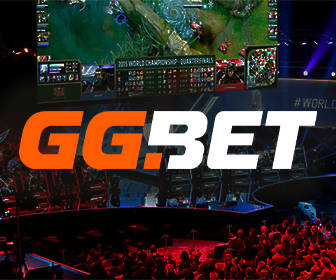Live-service games depend on habit. Their hubs are not just menus, but behavioral maps that shape player rhythm and retention. Yet many hub designs still confuse density with engagement. When too many simultaneous objectives, currencies, and notifications compete for focus, cognitive overload quietly sets in. Players may not notice why they feel drained—they simply log off sooner.
The most effective live-service hub design reduces that load while preserving novelty. Nielsen Norman Group’s principle of progressive disclosure offers the right model: reveal what matters now, defer the rest. In practice, this means front-loading immediate actions like “continue last session,” “claim reward,” or “join current event,” while nesting advanced options under clear categories. When a hub forces users to mentally filter every possible reward at once, decision friction outweighs excitement.
When Density Becomes a Detour
Players form a mental map of any layout within the first few seconds. Eye-tracking and impression studies show that people judge structure and relevance almost instantly—visual appeal can be assessed in as little as 50 milliseconds. In a game hub, that brief window decides whether the next tap feels like progress or work. Strong hubs establish a clear hierarchy at first glance: the eye flows from primary progression to secondary tasks and social prompts. Weak hubs flatten that structure so that everything blinks, scrolls, or pings at once, forcing the player to interpret before acting.
If you want a neutral lobby to study card grouping, new-content tiles, and category scannability, check out Ignition Casino and note how its modules prioritize “what to do next” without burying core actions; scanning Ignition Casino this way keeps the focus on hub UX, not outcomes. You can see how even a large catalog with many different categories can be set out in a way that logically guides players to the right places, helping them make a small number of decisions to reach the desired destination.
Strong hub design isn’t only about layout, though. It’s also about how emotion is framed before interaction. Every banner tone, icon contrast, and animation cue on Ignition Casino shapes what players expect will happen next, and the site is successful thanks to this design.
Three Layout Archetypes That Manage Load
1. Carousel Hubs (common in RPGs and open-world titles)
These rely on horizontal browsing that feels cinematic but often hides key features beyond the scroll. Retention improves when events or unfinished objectives appear near the start of the loop. The fewer “next-step” choices a player must weigh per session, the more likely they are to continue.
2. Grid Hubs (seen in strategy and casino-style platforms)
Grids excel at offering parallel scanning, but can create paralysis if each tile competes visually. The fix lies in scale and rhythm: larger tiles for recurring features, smaller for promotions, and a subtle fade for inactive elements. This forms a hierarchy without clutter.
3. Modular Dashboards (in shooters and MOBAs)
Modern hubs mimic productivity dashboards where widgets display stats, passes, and social feeds. These empower experts, but can overwhelm newcomers. The optimal pattern delays full customization until a few sessions in, avoiding early analysis paralysis.
Managing Event Surfacing vs Overwhelm
Teams often treat event surfacing as an announcement problem, when it’s really about pacing. Overlays that appear immediately at login spike working memory demand and disrupt the player’s settling-in period.
Generally, UX principles recommend timing interruptions during moments of low task demand and using non-modal cues wherever possible. Translating that into hub UX means triggering one contextual banner after the first settled action, rather than loading a stack of modals all at once. A simple rhythm—persistent content always visible, rotating events introduced later, ephemeral promos saved for post-session—keeps novelty high without cognitive clutter.
Designing a Retention-Friendly Menu Flow
A menu flow doubles as silent onboarding. When players know where they are and how to exit, friction feels purposeful instead of confusing. Three cognitive design principles strengthen retention:
- Chunking: Group related actions into three to five categories—no more.
- Recency Bias: Place “continue” or “resume” near where the cursor or thumb last rested.
- Semantic Feedback: Use micro-animations and sound cues tied to context, not hype.
Session onboarding flows built this way shorten decision time and raise return likelihood. Final Fantasy XIV provides a good precedent: daily roulettes and recurring quests occupy consistent map positions across patches, preserving memory even as new systems arrive.
Testing Cognitive Load in Practice
Studios can benchmark their own hubs with two lightweight UX metrics:
- Average Action Delay (AAD): time from login to first meaningful click.
- Interface Recall Accuracy (IRA): percentage of players who can locate a target feature after one exposure.
Balanced hubs maintain AAD under five seconds and IRA above 80 percent. When those numbers diverge, entropy has likely crept in through redundant icons, pop-ups, or conflicting motion cues. Simple unmoderated tests or click-path heatmaps can reveal friction points before live rollout.
| Heuristic | Target Value | Common Failure Point |
| Average Action Delay | ≤ 5 s | Too many overlays at load |
| Interface Recall Accuracy | ≥ 80 % | Inconsistent iconography |
| Menu Depth | ≤ 3 levels | Nested progression screens |
| Simultaneous Call to Actions | ≤ 6 | Overlapping banners |
Why Cognitive Simplicity Feeds Retention
Every unnecessary decision drains working memory, but clarity restores it. By showing less and guiding better, designers invite repeat sessions. Dual Process Theory from psychology helps explain this: effortless interactions keep players in the fast, intuitive system, while clunky layouts force slow, analytical reasoning that tires the brain.
The most effective live-service hubs feel invisible because they respect these cognitive boundaries. What looks like simplicity is often deliberate constraint—the kind that keeps players returning day after day.

